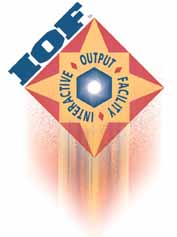
September 1998
Newsletter
IOFTech Maintenance Release8G Newsletters Doc FAQ Contact Home
Year 2000 Testing Tips
 September 1998 Newsletter
IOFTech Maintenance Release8G Newsletters Doc FAQ Contact Home |
Year 2000 Testing Tips
|
The October, 1997 Newsletter and the IOF Support for the Year 2000 web page are two additional sources for information about IOF support for the year 2000.
This newsletter gives several additional hints and suggestions
that may make your Y2K testing with IOF easier.
Assume that your normal production patch is:
JES2 uses the TIME SVC for most timestamps but does use STCK to
timestamp a few internal control blocks. IOF displays JES2
generated timestamps in the Job List Menu, Output Group
Display, Job Summary Panel, and other displays. If you do
not set GMT, some IOF displays will be inconsistent.
Both JES2 and IOF tolerate future jobs on the spool with no
problem. The IOF AGE calculation yields a negative result
for future jobs. Negative age values are converted to blank for
display to eliminate confusion and eliminate problems with Rexx
execs and clists that process the age value.
Some sites are already running with HCFORMAT(CENTURY) specified.
Sites that decide to convert to 4 digit year will likely do so
long before the year 2000.
The 7D version of SLAMRUN, SLAMDEF, SLAMINST, SLAMPROC, SLAMMEMO,
SLAMOPER, SLAMARCH, and SLAMWTR automatically detect and adapt to
the format of the year in use. Note, however, that if you have
defined local index conditions in SLAMINST and plan to convert to
use 4-digit year, you should update your definitions. The new
YEARSIZE variable is set in all SLAM clists to a value of 2 or 4
to indicate the number of digits being used in SYSLOG or OPERLOG.
If you are running SLAMMEMO to make memo copies of old SYSLOGs
you must be careful when you switch from 2-digit year to 4-digit
year. SLAMMEMO can not properly index a mixture of 2 and 4 digit
year log dates. Be sure to run SLAMWTR or an equivalent writer
to remove all old SYSLOG data that use a 2-digit year from the
spool before you run SLAMMEMO to capture SYSLOG data that uses
4-digits for the year.
Authorization Passwords
IOF requires authorization passwords that are CPU and date
sensitive. Most normal production authorization passwords will
not permit Y2K testing because the expiration date is earlier
than January 2000. We provide two authorization passwords for
Y2K testing:
IOF is not authorized to run by the CPU dependent test password
when the clock is set prior to June 1, 1999. Therefore when this
password is applied in lieu of your production password, that
copy of IOF will not run when you IPL with the current date. If
you need to occasionally run your Y2K system with the current
date set, you can apply both passwords concurrently.
REP 00 5785,B2D2,05DC,BE31 Temporary Y2K Patch
REP 00 1234,88EC,FEDC,9999 CPU 9021 2477
REP 08 3333,4444,5678,AABC CPU 9021 2499
REP 10 7878,3344,ABCD,FDDC CPU 9021 2507
Assume your CPU dependent Y2K test patch is:
REP 00 2000,FFED,A99B,CDEF Y2K patch
The Y2K test patch MUST reside at location 00. Your
production patch can be adjusted upwards, however if it is kept
contiguous with the Y2K patch. The two patches shown above could
be combined:
REP 00 2000,FFED,A99B,CDEF Y2K patch
REP 08 1234,88EC,FEDC,9999 CPU 9021 2477
REP 10 3333,4444,5678,AABC CPU 9021 2499
REP 18 7878,3344,ABCD,FDDC CPU 9021 2507
This allows the same copy of IOF to run on any of your production
machines with the date set to the current date, and on your Y2K
lpar with the date set between June 1, 1999 and July 31, 2001.
Setting the Clock
When you set the clock during IPL in response to the IEA886A or
IEA888A message, you have the option of setting either the local
date/time or the GMT date/time. For example, suppose the
system issues:
IEA888A GMT DATE=1998.288,CLOCK=13.01.15
*00 IEA888A LOCAL DATE=1998.288,CLOCK=08.01.15 REPLY U, OR GMT/LOCAL TIME
This message displays both the local and GMT time and allows you
to reset either time. When you reset the time for Y2K testing,
you should normally set the GMT time. By default, local
time is the GMT time adjusted by the local offset as specified in
the CLOCKxx member of 'SYS1.PARMLIB'. The MVS TIME SVC returns
the local time value, but the S390 STCK instruction returns the
GMT value. Future Jobs on the Production Spool
If your Y2K lpar is connected to your production system via NJE,
jobs that run on the Y2K system will appear to have run in the
future when they are returned to the production system. The same
effect is seen if Y2K jobs are offloaded with the JES2 offloaders
and reloaded on the production system. IPLing the Y2K system
with the current date produces the same effect.
Four Digit Year in SYSLOG and OPERLOG
The HCFORMAT parm on the HARDCOPY statement in the CONSOLxx
member of 'SYS1.PARMLIB' specifies the format of the date field
in SYSLOG. IOF also uses this parm to control the format of the
date field display in OPERLOG. The default format displays a
2-digit year. HCFORMAT(CENTURY) specifies that the year should
be displayed as 4 digits.
IOF Server Utilities
The May 1998 Newsletter describes
three IOF Server Utility Rexx execs that may be useful for Y2K
testing. These utilities require the IOF APPC server to be
installed, and require a VTAM connection between the production
and Y2K systems. The utilities can be browsed and downloaded by
clicking below.
Email
IOFTech@Triangle-Systems.Com